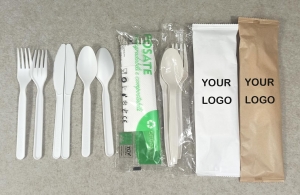Refrigerators are essential appliances, diligently preserving our food. However, issues like a malfunctioning defrost system can disrupt their functionality. In this guide, we'll explore troubleshooting and repair methods to tackle these issues effectively. For professional repair services, consider visiting sites of reputable providers, like https://fixappliances.ca/. With the right knowledge and assistance, you can ensure your refrigerator runs smoothly for years to come.
Signs of a Malfunctioning Defrost System
Before diving into repair methods, it's essential to recognize the signs indicating a problem with your refrigerator's defrost system:
- Excessive Frost Buildup: If you notice a thick layer of frost covering the evaporator coils in the freezer compartment, it's a clear indication of a defrost system issue. This buildup restricts airflow and compromises cooling efficiency.
- Temperature Fluctuations: Inconsistent cooling throughout the refrigerator, with certain areas too warm and others excessively cold, suggests a malfunctioning defrost system. This can lead to uneven preservation of food items and potential spoilage.
- Unusual Noises: Strange clicking or buzzing noises coming from the refrigerator could signal problems with the defrost timer or heater. These noises indicate potential issues with critical components of the defrost system that require attention.
Identifying signs such as excessive frost buildup, temperature fluctuations, and unusual noises can indicate a malfunctioning defrost system, prompting the need for troubleshooting and repair.
Troubleshooting the Defrost System
Once you've identified potential signs of a malfunctioning defrost system, follow these steps to troubleshoot the issue:
- Manual Defrosting: Start by manually defrosting the refrigerator. Unplug the appliance, remove all food items, and allow the frost to melt away. This step will provide a clear view of the evaporator coils and any underlying issues.
- Testing the Defrost Heater: Use a multimeter to test the continuity of the defrost heater. Lack of continuity indicates a faulty heater that needs replacement. During the defrost cycle, the defrost heater is in charge of melting frost off the evaporator coils.
- Inspecting the Defrost Timer: Manually advance the defrost timer to initiate the defrost cycle. Listen for a clicking sound, indicating proper functioning. If the timer fails to advance or doesn't click, it may need replacement. The defrost timer controls when the defrost cycle occurs.
- Testing the Defrost Thermostat: Check the defrost thermostat for continuity using a multimeter. A defective thermostat should be replaced to ensure proper defrosting. The defrost thermostat monitors the temperature of the evaporator coils and signals the defrost heater to turn on when necessary.
Through manual defrosting and testing of critical components like the defrost heater, timer, and thermostat, troubleshooting the defrost system helps pinpoint the root cause of issues affecting refrigerator performance.
Repairing the Defrost System
Once you've identified the specific component causing the issue, follow these repair tips:
- Replacing the Defrost Heater: If the defrost heater is faulty, disconnect it from the power source and install a new heater compatible with your refrigerator model. Proper installation is crucial for efficient defrosting.
- Installing a New Defrost Timer: Remove the old defrost timer and replace it with a compatible replacement. Ensure proper wiring according to the manufacturer's instructions. A properly functioning defrost timer is essential for initiating the defrost cycle at regular intervals.
- Replacing the Defrost Thermostat: Disconnect the old defrost thermostat and install a new one following the manufacturer's guidelines. Proper positioning and wiring are crucial for optimal performance. The defrost thermostat plays a vital role in regulating the defrost cycle based on the temperature of the evaporator coils.
Addressing faulty components such as the defrost heater, timer, or thermostat through replacement and proper installation ensures efficient operation of the defrost system, contributing to optimal refrigerator functionality and food preservation.
Seeking Professional Assistance
If you encounter challenges during the troubleshooting or repair process, or if you're not comfortable performing repairs yourself, it's advisable to seek professional assistance. Qualified technicians have the expertise and tools to diagnose and fix complex refrigerator issues efficiently. They can ensure proper diagnosis and repair, minimizing the risk of further damage to your appliance.
Preventive Maintenance Tips
To ensure the optimal performance and longevity of your refrigerator's defrost system, follow these preventive maintenance tips:
|
Maintenance Task |
Description |
|
Regular Cleaning |
Keep the refrigerator interior clean and free of spills to prevent frost buildup. |
|
Airflow Management |
Avoid overcrowding and blocking air vents to maintain proper airflow inside the fridge. |
|
Temperature Monitoring |
Use a thermometer to monitor and adjust the refrigerator's temperature for optimal cooling. |
|
Annual Maintenance Checks |
Schedule annual maintenance checks with a qualified technician to inspect and service the defrost system. |
Implementing these preventive maintenance measures will help prevent issues with your refrigerator's defrost system and ensure efficient operation over time.
A malfunctioning defrost system can disrupt the functionality of your refrigerator and compromise food safety. By following the troubleshooting and repair tips outlined in this guide, you can effectively address issues with your refrigerator's defrost system and ensure optimal performance. Remember to prioritize safety during repair procedures and seek professional help if needed. With proper maintenance and timely repairs, you can prolong the lifespan of your refrigerator and keep your food fresh for longer.






